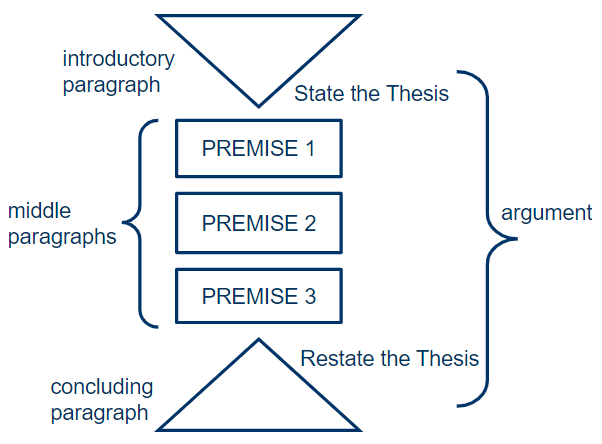
Environmental Science is an interdisciplinary field involving biology, geography, physics, sociology, ecology, medicine, chemistry and engineering subjects to study the environmental processes and solutions to environmental issues.
According to the University of Exeter:
“Environmental science is a quantitative and interdisciplinary approach to understanding and managing the world in which we live.”
- Nsengimana, H. Nsengimana and Gaspard Rwanyiziri resented the interdisciplinary nature of the environmental science discipline in their technical report “Rwanda Environmental Research Strategy.”

The scope of environmental science is proliferating with ever-increasing environmental systemproblems. According to the U.S. BUREAU OF LABOR STATISTICS:
Environmental scientist employment is multiplying by 6% from 2022 to 2032. Around 6900 new environmental science projects are opening every year. It is estimated that the average annual salary was $76,480 in 2022.
Due to its distinctive place in the job market, many students are studying for environmental science degrees to get extensive career opportunities. However, writing environmental science coursework is a hurdle for students due to its multidisciplinary field because students have to learn about multiple ideas from various disciplines to complete their coursework assignments.
At this point, students require a practical guide to meet their institute assignment instruction. Furthermore, they can also seek for coursework writing services to get high grades without any trouble.
Write Environmental Science Coursework: A Practical Guide
Students need to know how to write impressively if they to get high scores in their coursework and you can do so by improving your academic writing and research skills. In this piece of writing we will discuss a detailed guide that will assist you in writing your environmental science coursework.
1. Understand Coursework Requirements
The first thing that will give you a direction to move while writing coursework is to understand your assignment properly. It is the most practical tip before you start writing your work. While reading instructions, you need to consider the following aspects:
- Is that an explorative or an argumentative type of coursework?
- Which type of research is required to cover the topic?
- What are the expectations of your instructor?
- Are you asked by your teacher to write an essay, case study or report?
Having a strong grip on all environmental science coursework requirements will help in understanding the purpose and structure of your assignment. Furthermore, by following the instructions, you will be able to formulate assignments according to the criteria.
2. Choose Your Topic Carefully
The topic selection step sounds easy, but it is a very tough task for most of the students. When you have understood the instructions, you are now ready to make a title for your assignment that really suits your guidelines and covers every prompt mentioned in the guidance. While choosing a topic, the following aspects will aid you in narrowing your research.
- Your personal interest
- Look over the available information sources
- Select a time-manageable subject matter
- Consider future perspectives of research.
- Seek feedback from your peers, professors and family members who know.
3. Conduct Research
After having a topic to be discussed in your assignment, the next step is to research your topic deeply. In collecting data for your assignment, you need to consider both primary and secondary data. Consult different textbooks, academic databases, websites, articles, and peer-reviewed sources to collect secondary data. From this type of data, you can get an idea about the previous study about the subject matter.
In addition to secondary sources of information, you have to collect data from the primary sources to get first-hand evidence to support your thesis statement. To collect secondary information, you can conduct questionnaires, surveys, and interviews.
4. Structure Your Coursework Assignment
This will allow you to write your work in an appropriate formatting. To present you with information in a well-organised way, divide all the collected data into three main sections that will cover every single detail about the topic.
- Introduction
- The Main Body
- Conclusion
According to Curtin University, general coursework assignments or an essay structure is shown below:

So, your coursework in environmental Science should have these significant portions, as discussed above.
By following this strategy, you can organise your data in the most manageable way. It will represent that the research is provided from approved sources in an order.
5. Create an Engaging Introduction
Introduction is the first section of your assignment, which provides information about your selected topic and existing research about it. State your thesis statement in which you can briefly explain your main argument that will be discussed in your whole assignment. Your strong introduction is the best place to engage your reader with your central concepts.
6. Create a Strong Thesis Statement
A thesis statement is a central theme or a concept about your selected topic. It is an idea in one or two sentences at the end of the introduction. According to The University of North Carolina at Chapel Hill,
“The thesis statement serves as a summary of the argument you’ll make in the rest of your paper.”
- It guides your reader on what to expect to learn.
- Set findings and express your point of view.
- Create a road map of your paper.
No matter what type of coursework you are writing, you have to add thesis statements about the selected topic.
7. Present Arguments in The Main body
This will be the main section of your writing, where you will proceed with your central theme by giving different supporting arguments and related shreds of evidence. Review the existing research and present arguments to identify a research gap that will help you in raising a research question.
Maintain the originality and uniqueness of your work by paraphrasing the previous research or directly quoting others’ work by giving them credits with in-text citations and references.
8. Summarise your Central Point
At last, sum up all the key points to prove your thesis statement. Your conclusion refers back to the introduction and clearly gives an answer to the research question. The conclusion structure includes the following components.
- Restate the thesis statement.
- Summarise all the key points and arguments.
- Close-up contact with a concluding statement or a personal comment.
9. Add Reference & Citations
Incorporating a reference list at the end of the assignment and citations in the context will make your work more authentic and valid. In academic writing, effective refereeing and citations will ensure that:
- Deeply research about your subject matter
- Demonstrate that you complete your work with complete understanding.
- You proved your work with different ideas, evidence and quotes.
- Your assignment is free from plagiarism and written with honesty.
In order to cite references, you need to follow the guidelines and instructions given by your institutes. In case you are not given a specific referencing and citation style, you can use the most common referencing styles, which include:
- APA
- MLA
- Chicago
10. Edit and Proofread the Environmental Science Coursework
This is the last step, which is to refine your work by checking and looking over assignments from different perspectives. It is important to proofread your assignment before submission. The purpose of editing and proofreading is to:
- Determine spelling, punctuation, and grammatical errors.
- Check work against the fluffing of words.
- Poor structuring and formatting
- Inconsistency between sentences and paragraphs
Highlight all the mistakes and create a final draft of your writing by correcting these errors. Furthermore, only carry relevant subject-specific information and remove irrelevant concepts.
Conclusion
Environmental science is an interdisciplinary field cornering with a variety of other subjects. Students need to study all the related subjects to cover environmental science coursework.
Most of the students are not able to tackle all the hurdles while researching a topic, organising data, evaluating, finding and writing a well-structured and organised piece of paper.
Such students require practical guidance while writing, as we have discussed above, all the essential steps that will allow you to formulate your work in an effective and manageable order. But if you are still confused and looking for external help, you can get coursework writing help to secure your final grades in the environment sciences course.

